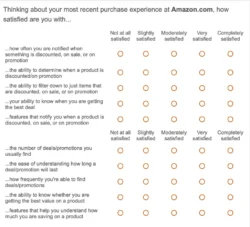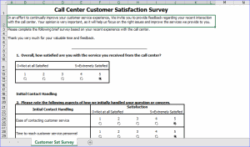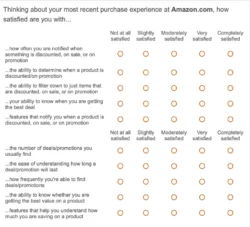Understanding what your customers truly think and feel about your products, services, and overall experience is absolutely crucial for any business aiming for long-term success. It’s not just about knowing if they’re happy; it’s about identifying areas for improvement, celebrating what you do well, and ultimately, building stronger, more loyal relationships. An annual customer satisfaction survey provides a structured way to gather this invaluable feedback, allowing you to track changes over time and make data-driven decisions.
By making these surveys a regular part of your business operations, you create a consistent feedback loop that informs your strategy and validates your efforts. This article will guide you through crafting an effective annual customer satisfaction survey template, discussing what to include and how to make the most of the insights you gather, ensuring your customers always feel heard and valued.
Crafting Your Effective Annual Customer Satisfaction Survey
Developing a comprehensive and insightful annual customer satisfaction survey doesn’t have to be a daunting task. The key lies in asking the right questions in the right way, ensuring you cover all critical aspects of the customer journey without overwhelming your respondents. Think of your survey as a conversation, designed to elicit honest and actionable feedback. It’s about balancing quantitative ratings with qualitative insights to get a full picture.
When structuring your survey, it’s often helpful to begin with broader questions and then drill down into specifics. This helps respondents ease into the survey and provides context for their later, more detailed answers. Remember, clarity and conciseness in your questions are paramount; ambiguous or lengthy questions can lead to inaccurate responses or survey abandonment.
Key Question Categories
To ensure you capture a holistic view of customer sentiment, consider including questions from several key categories. This multi-faceted approach helps you understand both the overall satisfaction and the specific touchpoints that influence it. Here are some essential areas to cover:
- **Overall Satisfaction:** These questions gauge general happiness with your brand, products, or services. A simple Likert scale question, such as “How satisfied are you with [Company/Product]?” is a great starting point.
- **Product/Service Specifics:** Dive deeper into particular aspects of your offerings. Ask about features, usability, quality, and how well they meet customer needs. This helps pinpoint areas for product development or service enhancements.
- **Customer Support Experience:** Evaluate the effectiveness and helpfulness of your support channels. Questions about responsiveness, knowledge of agents, and resolution speed are crucial for understanding this vital touchpoint.
- **Value for Money:** Understand if customers perceive your pricing as fair and if they feel they are receiving good value for their investment. This can inform pricing strategies and marketing messages.
- **Likelihood to Recommend (NPS):** The Net Promoter Score (NPS) question (“How likely are you to recommend [Company/Product] to a friend or colleague?”) is a powerful indicator of loyalty and growth potential.
- **Open-Ended Feedback:** Always provide opportunities for customers to share their thoughts in their own words. This qualitative data is gold, often revealing insights you hadn’t considered and providing context to quantitative scores.
Finally, think about the flow and length of your survey. A good rule of thumb is to keep it concise enough to respect your customers’ time, typically aiming for a completion time of 5-10 minutes. A well-designed annual customer satisfaction survey template will guide you in balancing depth with brevity.
Leveraging the Insights from Your Annual Survey Data
Collecting feedback is just the first step; the true value of an annual customer satisfaction survey lies in how you analyze and act upon the data. Once the responses start rolling in, it’s time to put on your detective hat and look for patterns, trends, and actionable insights. Don’t let your valuable data simply sit in a spreadsheet; make it work for you.
Start by segmenting your data. Look at responses based on different customer demographics, product usage, or even how long they’ve been a customer. This can reveal specific pain points or areas of delight for different customer groups, allowing for more targeted improvements. For instance, new customers might have different feedback than long-term loyal clients.
The qualitative data from open-ended questions is just as important as the numerical scores. Use text analysis tools or manually review comments to identify recurring themes, common complaints, or unexpected compliments. These verbatim comments provide the "why" behind the numbers and often highlight crucial details that quantitative questions might miss.
Most importantly, once you’ve identified key insights, integrate them into your business strategy. Share findings across relevant departments, from product development and marketing to customer service and sales. Develop action plans based on the feedback, assigning responsibilities and setting timelines for implementation. Demonstrating that you listen and act on feedback reinforces customer trust and loyalty.
The continuous loop of gathering, analyzing, and acting on feedback is what truly sets successful businesses apart. It’s not about achieving perfection, but about demonstrating a commitment to ongoing improvement and customer centricity. By consistently refining your processes based on what your customers tell you, you ensure your business remains agile and customer-focused in an ever-evolving market.



